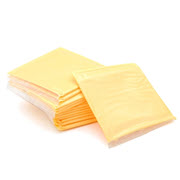|
Ghostnuke posted:gently caress those things forever. The guy who did my job before me used a bunch of those in 12 volt applications and they work like poo poo. I can't even imagine using them for 110. What is a better alternative n 12v applications? I mean besides soldering and shrink tubing.
|
|
|
|

|
| # ? May 13, 2024 23:50 |
|
Ghostnuke posted:gently caress those things forever. The guy who did my job before me used a bunch of those in 12 volt applications and they work like poo poo. I can't even imagine using them for 110. These things are used a lot for model railroad wiring but you HAVE to get the 3M made ones, any other brand is unreliable poo poo.
|
|
|
|
A closed end connector.
|
|
|
|
FogHelmut posted:What is a better alternative n 12v applications? I mean besides soldering and shrink tubing. quality (3M, raychem duraseal, tyco/AMP/TE, et al) sealant lined heatshrink butt splices. And a good ratchet crimper. Crimpin' aint easy, guys.
|
|
|
|
Are wire-nuts an acceptable way to deal with house wiring? Assuming you get the proper size for the wires you're working on, of course. The most infrastructure-like wiring I've ever done is fixing a lamp. I'm more of a LVDC kind of guy. Someone told me once that soldering house wires is bad, not just because it's a giant pain to disassemble, but because the solder joint doesn't conduct as well as a tight bare-copper-on-bare-copper connection like you'd get in a wire-nut so you'll get more heat. No idea if that's true though.
|
|
|
|
Yeah, wire nuts are perfectly legal in north america as far as I know, and if properly applied, I have no problem with them. Using them on fine-strand wire is kinda sketchy, but on heavy stranded wire (most THHN and other building wire is fine, basically) and solid conductor it is perfectly OK. Apparently they are frowned upon in europe, where barrier strips and bus bars + setscrew clamp style butt connectors are preferred. Last time soldering house wiring was OK was when knob and tube was still in use. The standard way to splice knob and tube was to do a western union splice, solder it, wrap the splice in unvulcanized natural rubber tape (which would adhere to itself and bond into a solid mass of rubber) then wrap the whole shebang in friction tape. So glad that's verboten now, what a loving mess.
|
|
|
|
Ghostnuke posted:gently caress those things forever. The guy who did my job before me used a bunch of those in 12 volt applications and they work like poo poo. I can't even imagine using them for 110. Oh, gently caress yes, screw those things. Any sight of those in an install that someone wanted us to fix triggered an immediate price increase for a complete re-wire at the mobile electronics shop I used to work at. See, we warrantied our work, and no way could we warranty anything with those crap-rear end things in it. Barely better than twist an tape, possibly worse.
|
|
|
|
FogHelmut posted:What is a better alternative n 12v applications? I mean besides soldering and shrink tubing. Had good experiences with posi-lock connectors when riding bikes. Actually I found out about them from a bike review site originally.
|
|
|
|
Yeah you are hosed if you warranty anything with those in it, even if they were in it when it rolled in. Hell, ESPECIALLY if they were - people love to discover old problems once they have a warranty on something. A friend of mine does A/V tech work at Best Buy (I know... he's actually pretty drat good) and has been blamed for poo poo that is completely unrelated to what he worked on many, many times. Somehow he got lucky and has a manager who isn't afraid to stand up for him. They'll do enough free diagnosis on a problem to prove it isn't their fault, which is usually enough to tell the customer what the problem is - many, many failed starter solenoids, crummy grounds, corroded factory wiring, bodged radio/remote start/alarm installs from other shops, etc. e: those posi-lock things look ok as long as you aren't putting them in an automotive/marine/aerospace/outdoors/classified environment. Not sure I'd use them on solid conductor wire, either... but I'm incredibly picky about how my wiring is done.
|
|
|
|
Ghostnuke posted:gently caress those things forever. The guy who did my job before me used a bunch of those in 12 volt applications and they work like poo poo. I can't even imagine using them for 110. You are speaking my brains. I guess I should be thankful this one just fell off and didn't start sparking and burn the drat place down.
|
|
|
|
kastein posted:Last time soldering house wiring was OK was when knob and tube was still in use. The standard way to splice knob and tube was to do a western union splice, solder it, wrap the splice in unvulcanized natural rubber tape (which would adhere to itself and bond into a solid mass of rubber) then wrap the whole shebang in friction tape. So glad that's verboten now, what a loving mess. The original NM wiring in my 1956 house was joined like that instead of using wire nuts. They were legit joints too, always in boxes with a pigtail to the outlet. What's weird is that they used that ancient joining and wrapping method on NM with ground... When I found out my cables actually had the ground wire, I went back and corrected all those solder joints while also correcting the grounding paths all the way back to the busbar. Basically, I got super lucky. It wouldn't have killed the original electrician to leave more than 3 inches of wire in each box though. Also, don't ever let that old rubber tape touch your hardwood floors. It's like a scuff mark from hell. This is for all you 12V wiring guys. How good is that liquid tape stuff compared to heat shrink? kid sinister fucked around with this message at 23:57 on Mar 12, 2014 |
|
|
|
kid sinister posted:This is for all you 12V wiring guys. How good is that liquid tape stuff compared to heat shrink? It's awful. If it's possible to use heat shrink tubing, then use it. If you need to cover like a flat surface or something where heat shrink won't work, then expect to apply many layers to get perfect coverage.
|
|
|
|
When dealing with most wiring that doesn't require a new junction box I'll just solder them together, then use a marette. Then I'll just electrical tape it (on the wires below the marette) well so that there is no chance of force being applied to the connection should it ever get pulled on or something. I've heard from a few people that you should never solder 120V connections because they could melt, but if that were an issue your house would have already burned down. Home Depot Update: It's been one month and two days since I ordered the two windows off their web site. I've called 5 times and each time I got the same answer, "I don't know why it hasn't been shipped, I'll just change the status to "priority" and they should be shipped within 48 hours. Well I called today, they gave me the exact same line and I finally told them not to bother. Went to my local Home Hardware 2 minutes down the road and they have two windows in stock, same brand, but with brick moulding, so I just got them. An extra $40, but missing the +5 degree weather yesterday was too much, and I could have had them installed in 2-3 hours. There is a chance that Friday will have some +2 weather, so if all goes to plan I'll have them installed then, and I'll be able to finish the vapour barrier the same day and get cracking on the drywall on the weekend. Naturally I have to do a bit if 1/8th->1/4" shimming on a few choice studs before the drywall goes on, but that's a pretty small job.
|
|
|
|
You guys are making it too complicated. Twist the wires together and crimp a cap on it, done.
|
|
|
|
FogHelmut posted:What is a better alternative n 12v applications? I mean besides soldering and shrink tubing. I really like these 3M Scotchlok connectors.  You clamp them down with pliers or something and they are filled with an epoxy to seal them. I've had a 100% success rate using them for basically everything low voltage.
|
|
|
|
I'm not an electrician, just an engineer, so it still seems crazy to me that soldering is frowned upon. A proper splice covered with heat-shrink tubing *should* be a great connection. I mean, from a practicality standpoint wire nuts are way easier--only need hand tools, and it's super simple. A soldered joint requires a soldering iron (and a small hot-air gun if you go with shrink tubing). It's also takes more skill to make a mechanically and electrically sound splice. And I guess there's also a risk of cold solder joints (big copper wires are very effective heatsinks, obviously, so you need a big enough iron). I guess I can admit that wire nuts are harder to screw up, but they've always seemed super sketchy to me.
|
|
|
|
Ghostnuke posted:You guys are making it too complicated. Twist the wires together and Fixed for the previous owners of almost all my cars.
|
|
|
|
kastein posted:quality (3M, raychem duraseal, tyco/AMP/TE, et al) sealant lined heatshrink butt splices. And a good ratchet crimper. MrPete posted:Had good experiences with posi-lock connectors when riding bikes. Sudden Infant Def Syndrome posted:I really like these 3M Scotchlok connectors. Let me clarify - I meant tapping into an existing line to add a new line off of it to power things well within the load rating of the line and fuse, rather than joining two line ends together.
|
|
|
|
Oh, right. Posi-tap then!
|
|
|
|
Slanderer posted:I'm not an electrician, just an engineer, so it still seems crazy to me that soldering is frowned upon. A proper splice covered with heat-shrink tubing *should* be a great connection. I mean, from a practicality standpoint wire nuts are way easier--only need hand tools, and it's super simple. A soldered joint requires a soldering iron (and a small hot-air gun if you go with shrink tubing). It's also takes more skill to make a mechanically and electrically sound splice. And I guess there's also a risk of cold solder joints (big copper wires are very effective heatsinks, obviously, so you need a big enough iron). The wires themselves put stress on the solder joint without any sort of stress relief, shrink or not. The nut provides mechanical clamping and relief.
|
|
|
|
MrPete posted:Oh, right. Posi-tap then! Or cut into the existing wire, twist the 3 ends together and still use a crimp cap. I'm not getting paid to shill them or anything, but you can get hundreds of them for a few bucks. It's just the cheapest/easiest for me.
|
|
|
|
Tim Thomas posted:The wires themselves put stress on the solder joint without any sort of stress relief, shrink or not. The nut provides mechanical clamping and relief. That's what the splice is for--a proper splice is a solid mechanical connection before soldering.
|
|
|
|
Sudden Infant Def Syndrome posted:I really like these 3M Scotchlok connectors. IIRC those are actually full of a silicone grease/gel that never cures, not epoxy. I sure as hell wouldn't want to fill them with epoxy or silicone RTV... They are pretty awesome for landline phone wiring, I have to admit. Just not sure I'm comfortable with them for power transmission.
|
|
|
|
Slanderer posted:A soldered joint requires a soldering iron (and a small hot-air gun if you go with shrink tubing). I always used a lighter for heat shrink. Of course, that's a bad idea around an engine, let alone trying to keep it lit outdoors on a windy day. kid sinister fucked around with this message at 22:59 on Mar 13, 2014 |
|
|
|
For the eight months or whatever I've owned my house the hall bathroom's tub has never really drained quite right. I've been procrastinating on dealing with it for various reasons, mostly that I rarely have guests stay over, the step-on latch drain plug thing is all kinds of hosed up, and I'm lazy. I decided to finally see what was up. It took a good while to wrestle off the goddamn plug cartridge...thing because it was both corroded and crossthreaded. I had to turn it so hard the lovely tub was flexing and I was afraid I was gonna end up with two problems. I managed to get it off, and the cause of the drainage problem was suddenly clear: The drain was full of seashells.
|
|
|
|
Blue Footed Booby posted:The drain was full of seashells.
|
|
|
|
If it's not a metal pipe, maybe run a whole bunch of vinegar down it?
|
|
|
|
Slanderer posted:I guess I can admit that wire nuts are harder to screw up, but they've always seemed super sketchy to me. They're not. Unless you splice the wires counterclockwise, then the copper 'tread' inside wont grip properly. If a marrette falls off, it's because it's too small or you spliced the wire in the wrong direction. If you do it right you wont be able to pull it off.
|
|
|
|
SynthOrange posted:If it's not a metal pipe, maybe run a whole bunch of vinegar down it? CLR or just straight muriatic acid would be a much quicker solution, assuming it's a nonreactive pipe.
|
|
|
|
Slanderer posted:I'm not an electrician, just an engineer, so it still seems crazy to me that soldering is frowned upon. A proper splice covered with heat-shrink tubing *should* be a great connection. I mean, from a practicality standpoint wire nuts are way easier--only need hand tools, and it's super simple. A soldered joint requires a soldering iron (and a small hot-air gun if you go with shrink tubing). It's also takes more skill to make a mechanically and electrically sound splice. And I guess there's also a risk of cold solder joints (big copper wires are very effective heatsinks, obviously, so you need a big enough iron). A proper splice, soldered with good techniques to high standards (NASA writes a spec that will make your head spin) is indeed a great connection. It's not the best connection for every situation, though. You need to balance conductivity, stress relief, shock tolerance, mechanical strength, reworkability, heat limits, and on and on. A properly made cold-weld between copper conductors (as you'd get in a crimp, wire-nut or wire-wrap connection) is actually stronger and has lower resistance than a comparable solder joint between the same two wires. Even NASA doesn't always use soldered joints, despite their incredibly detailed technique. All of the electronics on the Apollo capsules were built with wire-wrap, because they stand up better to the vibration experienced in a rocket launch.
|
|
|
|
Sagebrush posted:A proper splice, soldered with good techniques to high standards (NASA writes a spec that will make your head spin) is indeed a great connection. It's not the best connection for every situation, though. You need to balance conductivity, stress relief, shock tolerance, mechanical strength, reworkability, heat limits, and on and on. A properly made cold-weld between copper conductors (as you'd get in a crimp, wire-nut or wire-wrap connection) is actually stronger and has lower resistance than a comparable solder joint between the same two wires. My dad is an electrical engineer working for NASA at KSC and holy gently caress every single connection everywhere in my parents' house is up to the goddamn NASA spec in one way or another because he's insane, I can attest to them being loving indestructible connections.
|
|
|
|
SynthOrange posted:If it's not a metal pipe, maybe run a whole bunch of vinegar down it? This idea only works if you have months to wait for the drain to unclog.
|
|
|
|
Blue Footed Booby posted:The drain was full of seashells. ...how? how?? I'm in the process of house hunting right now, and I can't even imagine. Did someone put them there? Did they magically materialize? Why???
|
|
|
|
The answer is almost surely children putting things down the magic hole where all things disappear. https://www.youtube.com/watch?v=vNN2zolsehc
|
|
|
|
Dalrain posted:The answer is almost surely children putting things down the magic hole where all things disappear. Someone *really* doesn't know how to use the three seashells.
|
|
|
EroticRobot posted:...how? how?? I'm in the process of house hunting right now, and I can't even imagine. Did someone put them there? Did they magically materialize? Why??? Undoubtedly kids.
|
|
|
|
|
Zamboni Apocalypse posted:Someone *really* doesn't know how to use the three seashells. The part about flushing the shells was supposed to be a joke. Honestly I would not use anything rather than use a sharp seashell.
|
|
|
|
Blue Footed Booby posted:The drain was full of seashells. Seashells or live clams?
|
|
|
|
A lot of people like having shells in their bathroom as decorations + kids are loving awful.
|
|
|
|

|
| # ? May 13, 2024 23:50 |
|
Well, I presume they are not whole sheels otherwise they'd never have gotten down the drain. If it's a house on the beach it might have been bits of shell stuck on people which went down the drain as they washed themseves down. There'd be sand as well but that would slowly settle towards the bottom of the pipe.
|
|
|



































